Affiliate links on Android Authority may earn us a commission. Learn more.
OnePlus 6 review: the spiritual successor to the Nexus
Published onJanuary 15, 2019
Update – January: Since this review was posted, the successor to the OnePlus 6, the OnePlus 6T, has been released. The OnePlus 6 is still a great buy if you can find it, especially if you prefer rear mounted fingerprint scanners and don’t want to live without the headphone jack.
Original story: Move over OnePlus 5T, the OnePlus 6 has arrived. The latest iteration of the OnePlus family brings us an all-new design on the outside, and more of what we already love on the inside.
Aside from the obvious cosmetic changes, the OnePlus 6 feels very familiar. Let’s find out if that’s a positive or a negative in our OnePlus 6 review. Keep reading for the written review from Andrew, and be sure to check out David’s video review above.
Read Next: Motorola Moto Z3 vs the competition
Design
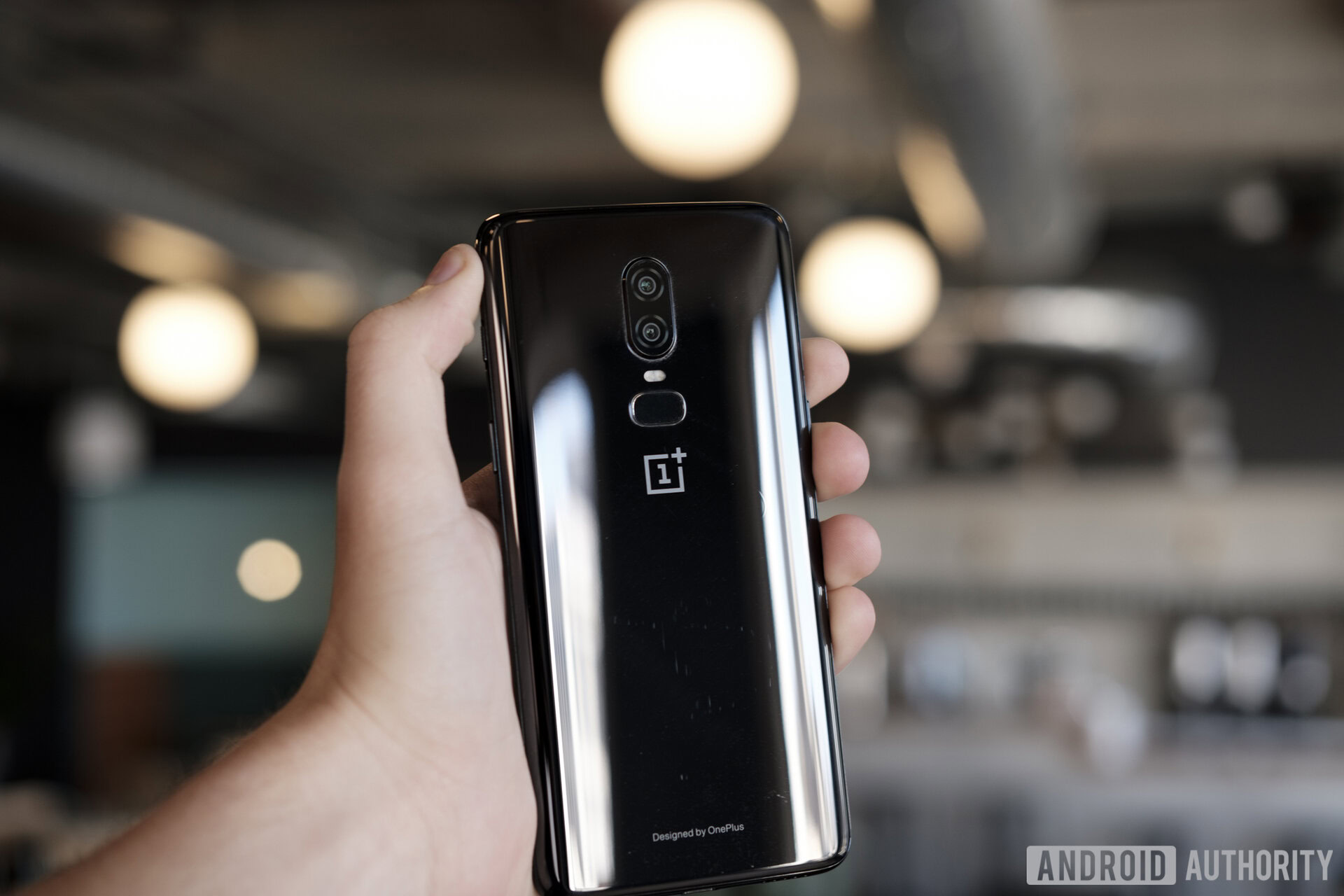
The OnePlus 6 is immediately distinguishable from its predecessor.
The phone swaps out a metal back for a glass one and rotates the camera, moving it to the center of the body. The rear fingerprint scanner is now oval, instead of the 5T’s circle.
The beveled edges on the OnePlus 6’s back panel are subtler than the 5T, making it feel slightly wider. The OnePlus 6 is also 15 grams heavier (at 177 grams) and .45mm thicker (7.75mm thick), due to its Gorilla Glass 5 exterior. This sounds like a minor difference, but it makes the OnePlus 6 feel a lot sturdier.
Despite these changes, the overall shape and footprint of the OnePlus 6 is very similar to the OnePlus 5 and 5T. This is rather impressive considering the display size increased by .27 inches.
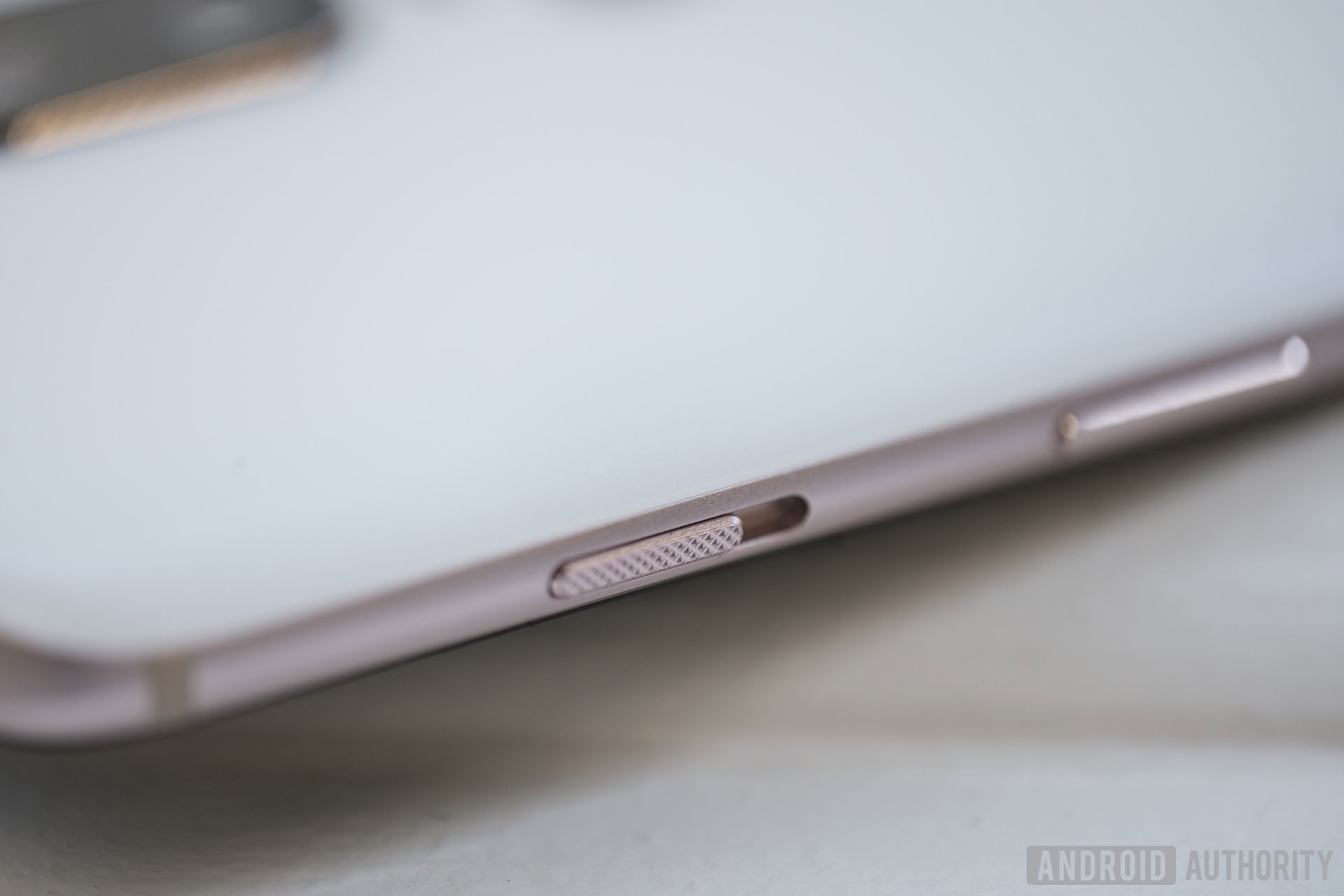
The front panel is almost entirely screen, with a small chin on the bottom and very thin bezels on the sides of the display. The top of the front panel is almost entirely bezel-free thanks to the notch, which contains necessary components like the front-facing camera. Love it or leave it, the massive display simply wouldn’t be possible without it.
The buttons and ports are in mostly the same spots as the OnePlus 5T, with one notable difference. The SIM tray and OnePlus notification slider have swapped sides. Having the slider on the right side actually feels much better. However, longtime OnePlus users might find it takes a little getting used to.
On the bottom you’ll find the headphone jack, USB Type-C port, and a single speaker.
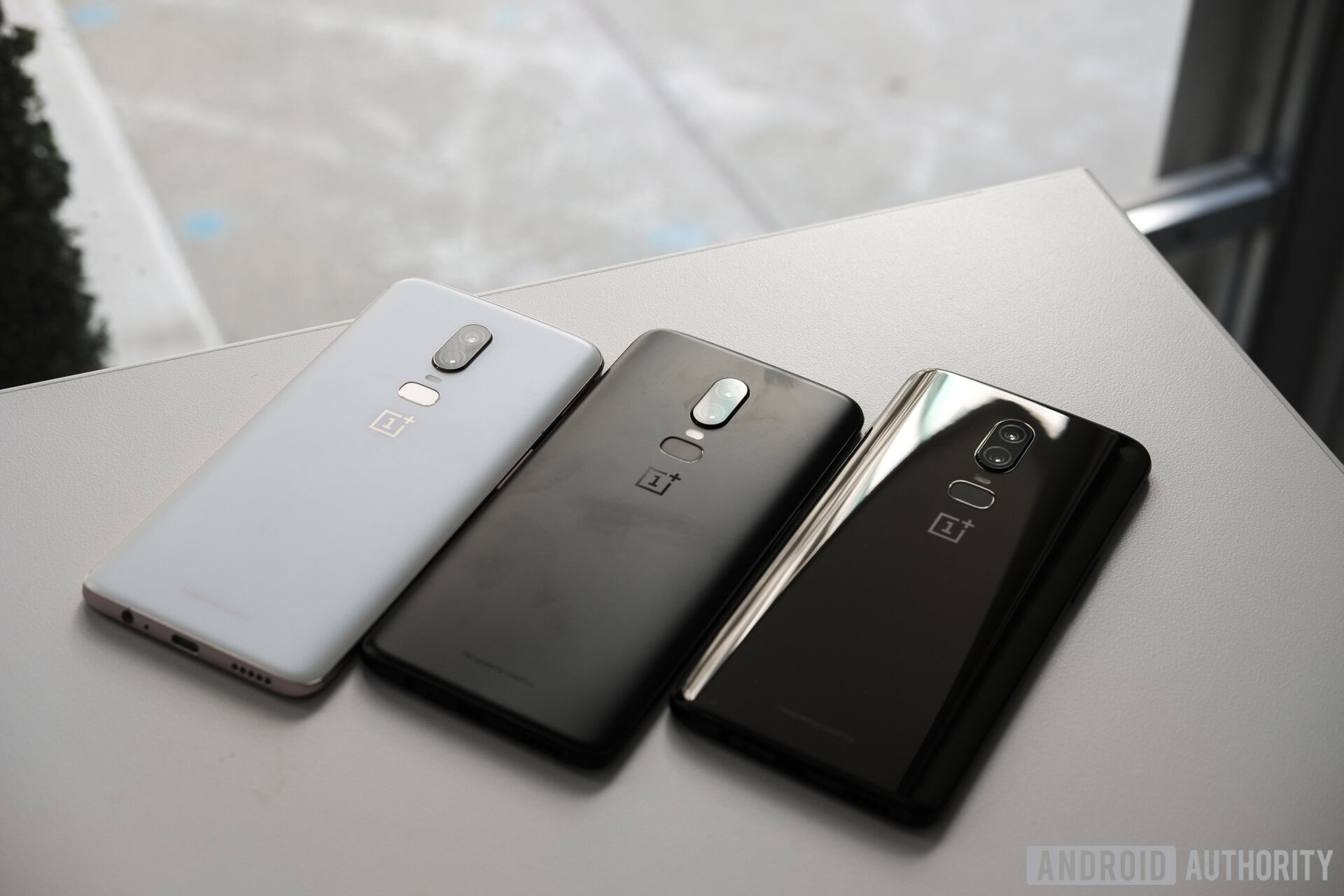
Color variants
OnePlus gave us the mirror black model for review, but the phone also comes in midnight black and silk white. Each model is unique due to a special film application over the glass. The silky white almost feels like it has a baby powder finish. Both the mirror black and midnight black options feel more like normal glass, but the mirror variant is shinier, more reflective, and more of a fingerprint magnet.
The switch to a heftier glass design feels fantastic
The OnePlus 6 still looks like a OnePlus handset, just with a more mainstream, premium shell. The switch to a Gorilla Glass 5 exterior has us a little worried about the long term durability, but there’s no denying it feels fantastic. For what it is worth, my OnePlus 6 is in great shape after nearly two weeks of daily use, though there are a few minor scratches on the back.
The OnePlus 6 isn’t waterproof, which is a letdown. OnePlus tested it to handle splashes, puddles, and rain internally, but there’s no formal IP certification. It’s unlikely the phone would fair well with full submersion. We haven’t tested these claims thoroughly, but the OnePlus 6 fared fine during use on a particularly rainy day. This anecdotal evidence is far from a full endorsement in OnePlus’ water resistance claims, but take it for what it’s worth.
Read Next: 5 Reasons you should buy the OnePlus 6
Display
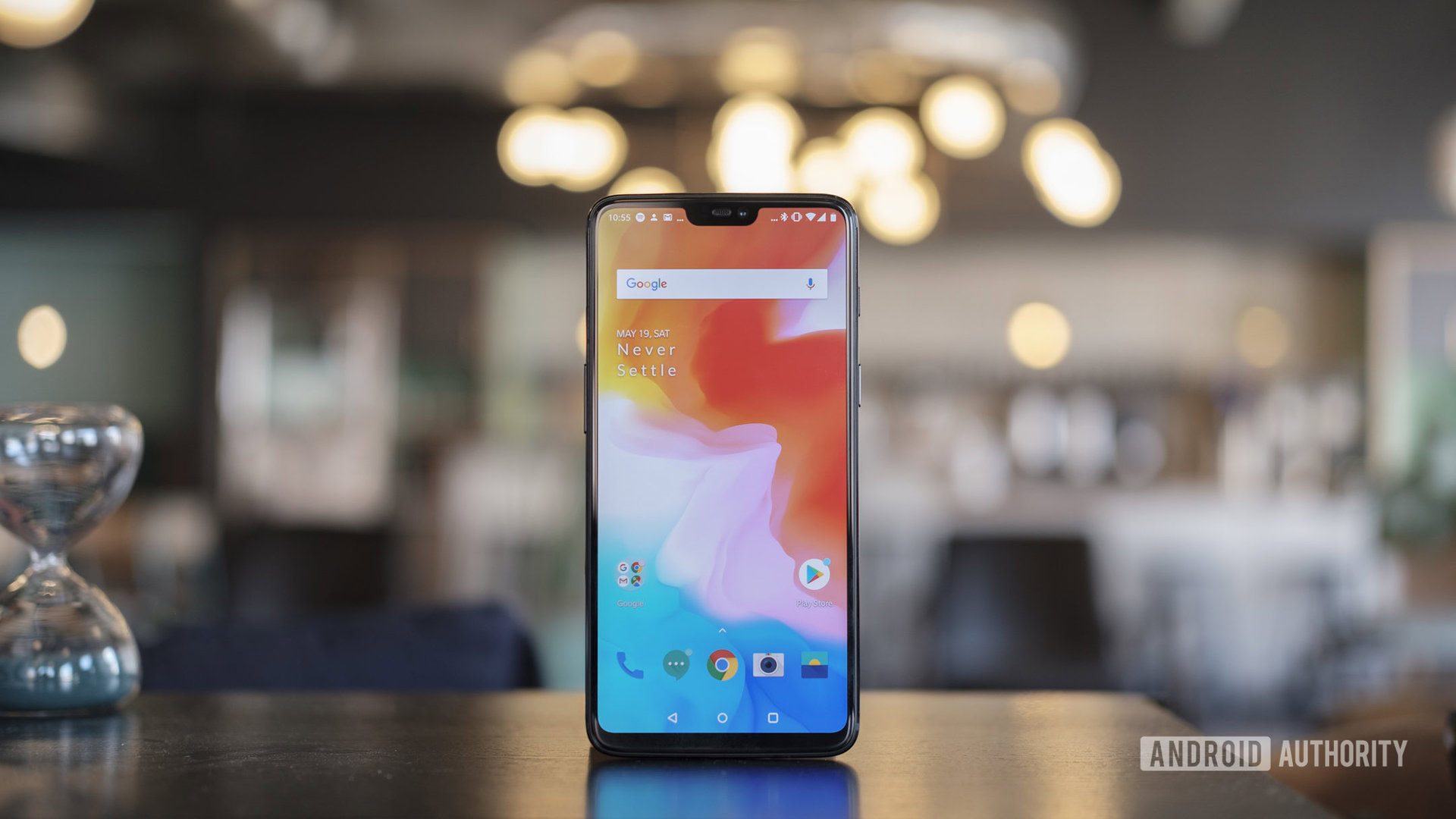
The OnePlus 5T gave us a 6.01-inch 1080p Optic AMOLED panel with an 18:9 display ratio, a very noticeable upgrade from the OnePlus 5. The 6.28-inch upgrade on the OnePlus 6 isn’t quite as dramatic.
Read Next: OnePlus 6 problems and how to fix them
The new display has smaller bezels thanks to the notch design, and it’s a bit bigger. Don’t expect it to feel massively different if you’re coming from the 5T. The underlying technology isn’t exactly new either, as it’s still a 1080p AMOLED, this time with a slightly higher resolution of 1,080 x 2,280.
Despite that, this is still an excellent display. All the benefits you’d expect from AMOLED are present, including vibrant colors, great viewing angles, inky dark blacks, and plenty of brightness for outdoor use. We’ll be performing some deeper display testing in the near future with specific measurements, so stay tuned.
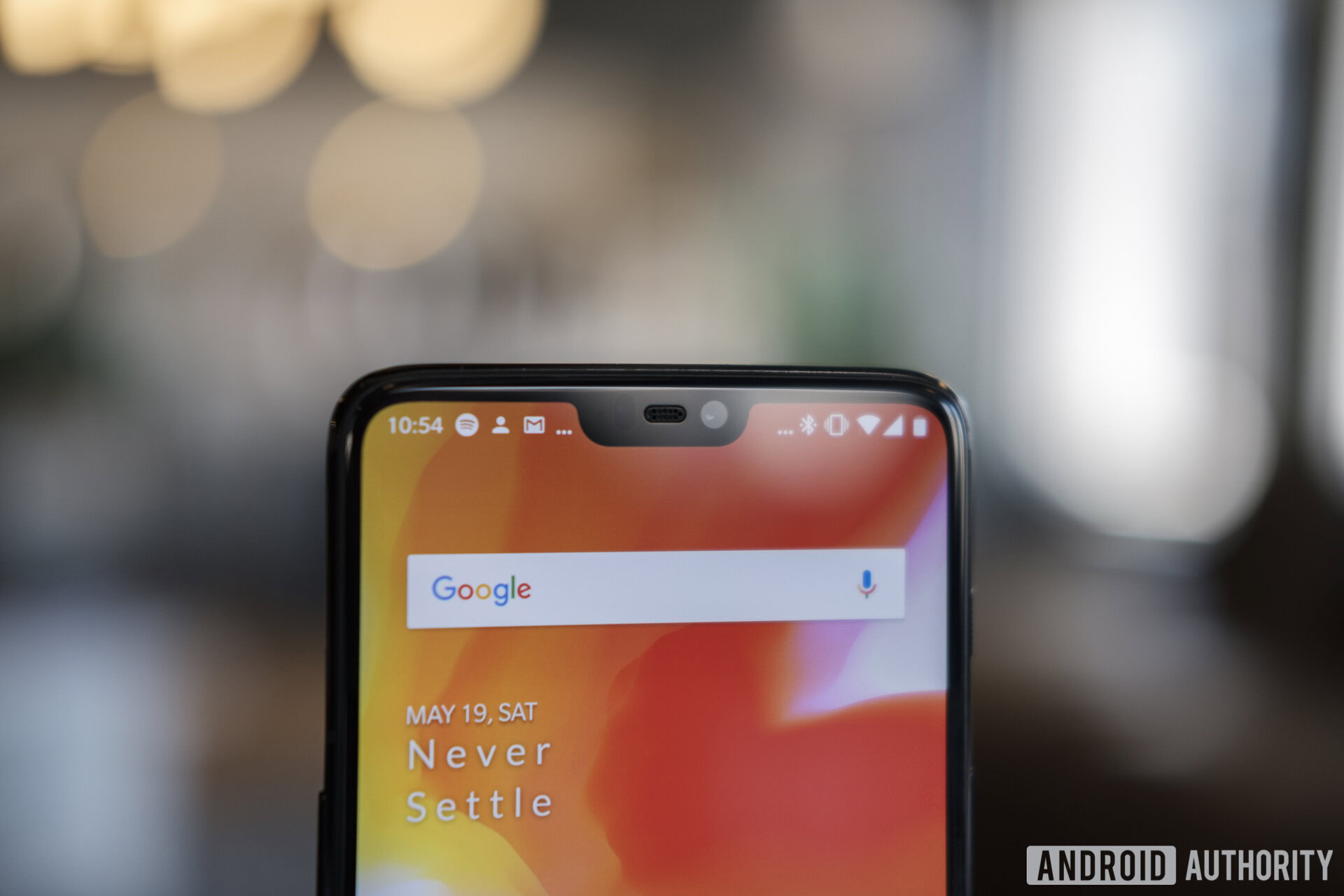
If you aren’t quite satisfied with the out-of-the-box settings, OnePlus has several display features to further refine your experience. Its sRGB mode will improve color accuracy, and you can also use color temperature sliders to fine tune things to your liking. The ambient display mode is easy on the eyes and the reading mode makes the display black and white for a more ebook-like experience. If you’ve used a OnePlus handset before, you’ll likely be familiar with all these features.
We get it, it’s 2018 and a 2K display would have been nice. Regardless, unless you’re really particular about resolutions, you probably won’t notice any major difference. A lower resolution also tends to result in better battery life (more on that in a bit).
Performance
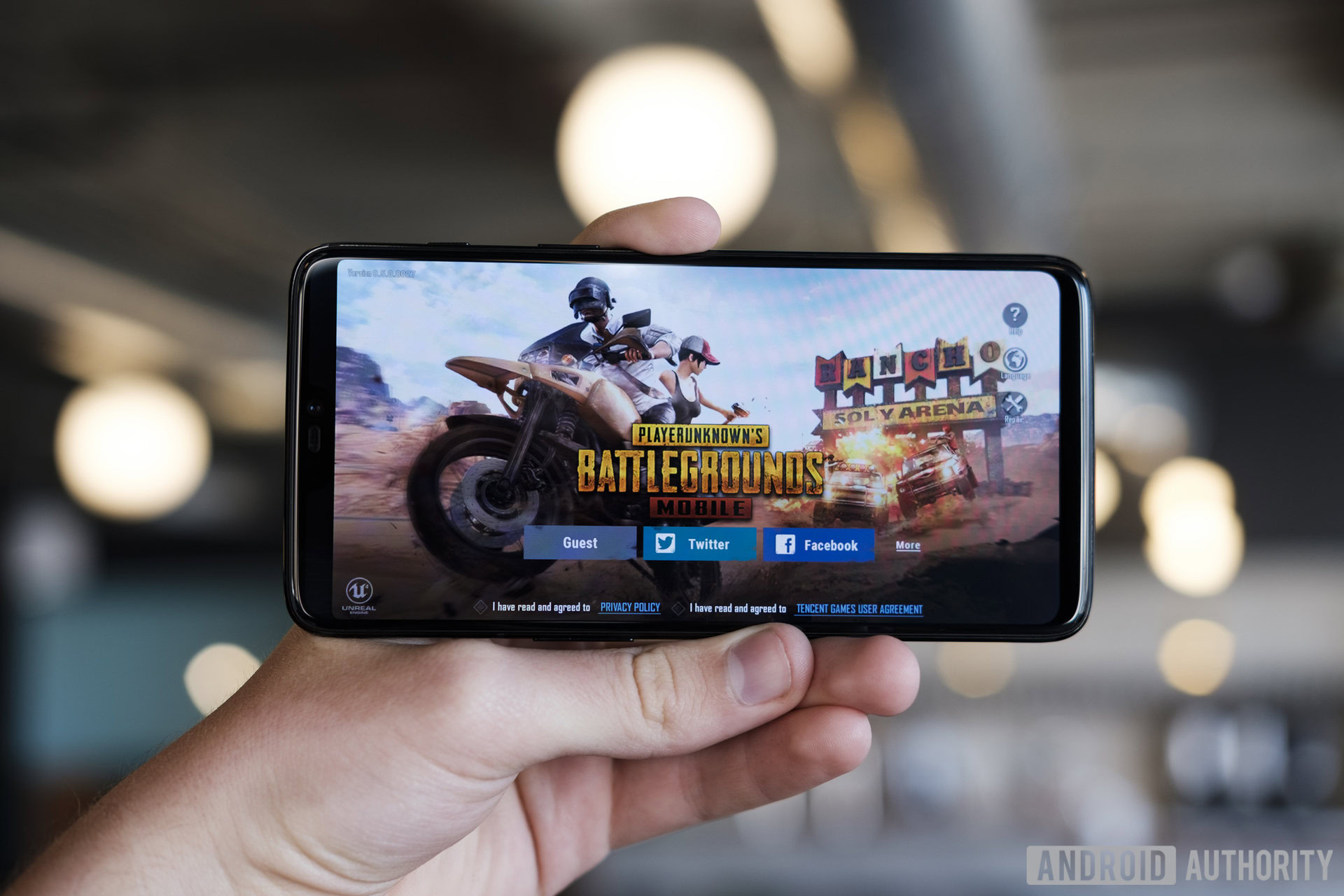
OnePlus is known for making small concessions to the keep price down, but this didn’t affect performance. The OnePlus 6 has some of the best specs you’ll find in the Android world.
The OnePlus 6 is powered by Qualcomm’s Snapdragon 845, paired with either 6GB or 8GB of RAM.
As you’d expect, the performance here is flawless. Animations are fast and fluid, and touch response is highly accurate. Every game or app we threw at it launched quickly without any noticeable hiccups. More demanding games like PUBG Mobile didn’t skip a beat. Real world performance doesn’t get much better than this. The benchmarks further support this claim.
We ran the OnePlus 6 through Geekbench, AnTuTu, and 3D Mark, comparing it to the the Galaxy S9 Plus (courtesy of Chris Thomas).
GeekBench 4 gave the OnePlus 6 a single-core score of 2,454 and a multi-core score of 8,967. In comparison, the Galaxy S9 Plus had a single-core score of 2,144 and a multi-core score of 8,116.
AnTuTu ranked the OnePlus 6 with a 262,614 overall score. The Samsung Galaxy S9 Plus actually came out a little ahead here, at 266,559.
Finally in 3D Mark the OnePlus 6 scored a 4,680 versus the Galaxy S9 Plus’ score of 4,672.
When it comes to real world differences, this all means very little. However, it illustrates that the OnePlus 6 has just as much muscle as a much more expensive flagship.
The OnePlus 6 has the same 3,300mAh battery size found in the OnePlus 5 and 5T. Despite the phone’s bigger display, battery life doesn’t suffer. Qualcomm’s Snapdragon 845 is more power efficient than ever, and OnePlus’ commitment to a less demanding 1080p display doesn’t hurt either.
David and I both had average screen-on times of around 5.5 hours. This is a more than acceptable average, considering both of us are power users and were running plenty of intensive apps to test performance. On days where my usage was more in line with an average user, the screen on time easily made it closer to six to seven hours.
I also ran the OnePlus 6 through PCMark’s battery test at the highest brightness. PCMark put the phone through a variety of tests designed to simulate real life usage. The final reading was a screen-on time of five hours and three minutes. Considering most users won’t actually run the phone at full brightness, you can expect at least this level of performance.
The OnePlus 6 battery performance isn’t groundbreaking but it’s well above average. It’s also almost irrelevant thanks to OnePlus’ Dash charging.
Dash Charge can take a battery from empty to 60 percent charged in just 30 minutes, which is quicker than many other quick charging solutions on the market. Combined with already great battery life, you’ll rarely find yourself completely out of juice.
Hardware
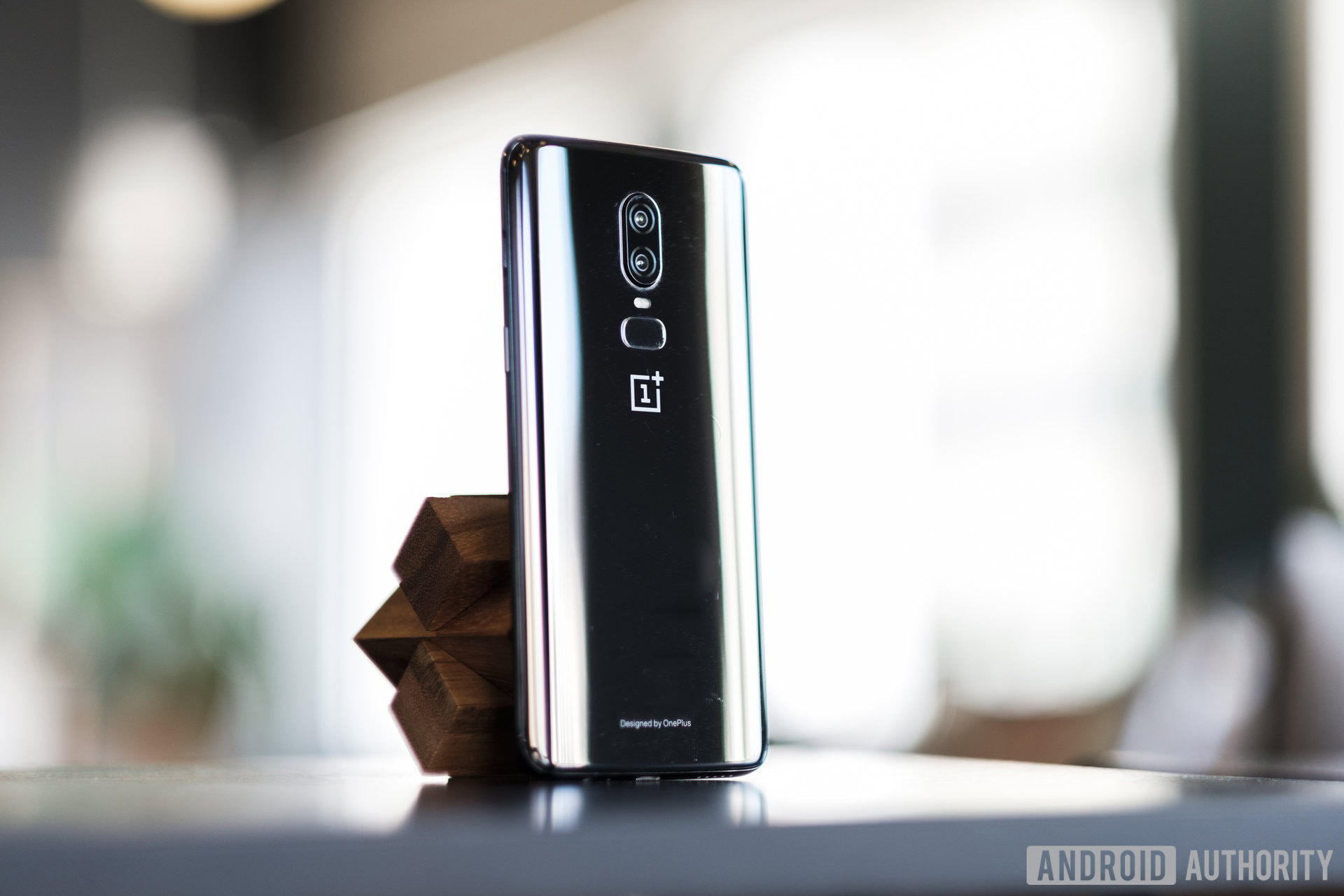
The OnePlus 6 comes in storage configurations of 64GB, 128GB, or 256GB. The smallest of these is paired with 6GB of RAM, while the other two models rock 8GB. The OnePlus 6 doesn’t support microSD expansions, but the larger built-in storage sizes help make up for this.
OnePlus 6 owners will not only have access to Bluetooth 5 for listening to music wirelessly, there’s also the trusty 3.5mm headphone jack. At least for now, OnePlus continues to be dedicated to a port many other manufacturers have deemed unnecessary.
OnePlus doesn’t offer Dolby Atmos, instead opting for Dirac HD Sound. While there are technical differences, both essentially set out to do the same thing: provide a better optimized, more immersive listening experience.
OnePlus doesn’t include any headphones out of the box, but keeping the included accessories to a minimum is a way to keep costs down. Most bundled headphones aren’t particularly great, anyway. OnePlus does offer official Bluetooth headphones, which can be purchased separately for $69.99.
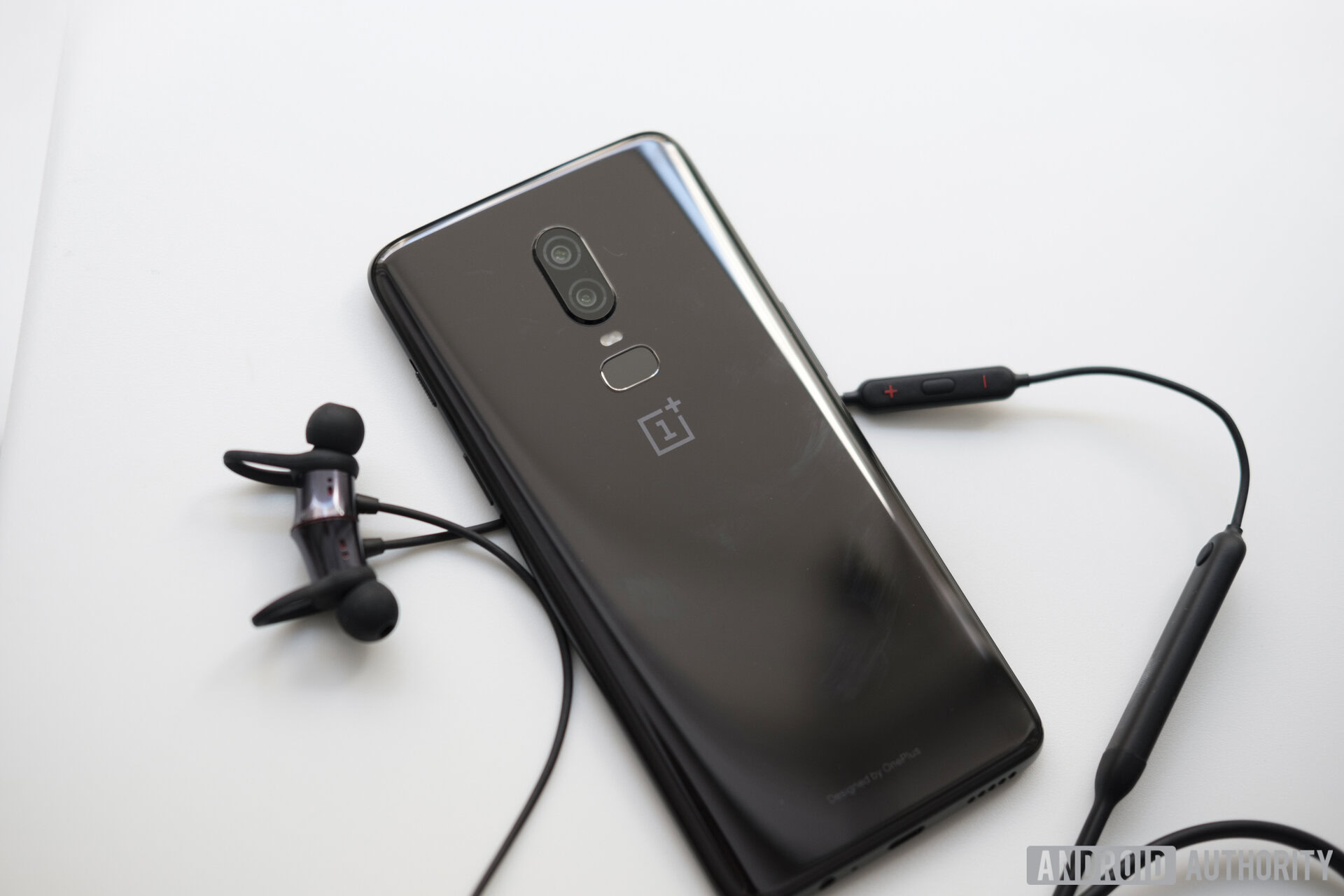
For those times when you’d rather use the internal speaker, you’ll find the OnePlus 6 delivers a pretty average experience. We did a totally unscientific listening test where I played the same few songs on the OnePlus 5, OnePlus 5T, and the OnePlus 6. The sound difference wasn’t very noticeable across the three models. All the tested OnePlus phones provided a reasonably loud experience, with the kind of distortion you’d expect when cranked to higher volume levels.
We mentioned earlier the OnePlus 6 fingerprint scanner has a new shape, but this is purely an aesthetic change. OnePlus told us the change was about returning to its roots, as every OnePlus phone before the 5T had a more oblong shape. The scanner is as fast as ever, unlocking the device nearly instantaneously. There’s not much more to say about the OnePlus 6’s scanner — it’s one of the best around. If you’re not into fingerprint tech, the 5T’s Face Unlock feature makes a return with the OP6.
The OnePlus 6 features everything you need in a phone, and nothing more
Face Unlock wasn’t perfect on the 5T, but it was fast and very usable most of the time. The OnePlus 6’s face unlocking isn’t any faster, but it is much more reliable. It never failed to recognize my face, even in relatively dark environments. Setting it up is very easy. Just line up your face with the camera and it will do a quick scan. After that opening up your phone is as simple as hitting the power button and letting the front camera see your face. This method isn’t as secure as a fingerprint reader, but it is arguably a bit more convenient.
The OnePlus 6 features 4×4 MIMO and Gigabit LTE. Gigabit LTE support is a first for OnePlus. Not all markets support these speeds yet, but it’s a nice extra bit of future proofing.
For those in the United States, the OnePlus 6 supports AT&T and T-Mobile, as well as all compatible MVNOs. U.S. Cellular, Verizon, and Sprint customers are out of luck. Considering the expected T-Mobile/Sprint merger, the latter is probably less of a problem.
The rest of the hardware features and specifications can be found here or in the table towards the article’s end.
Camera
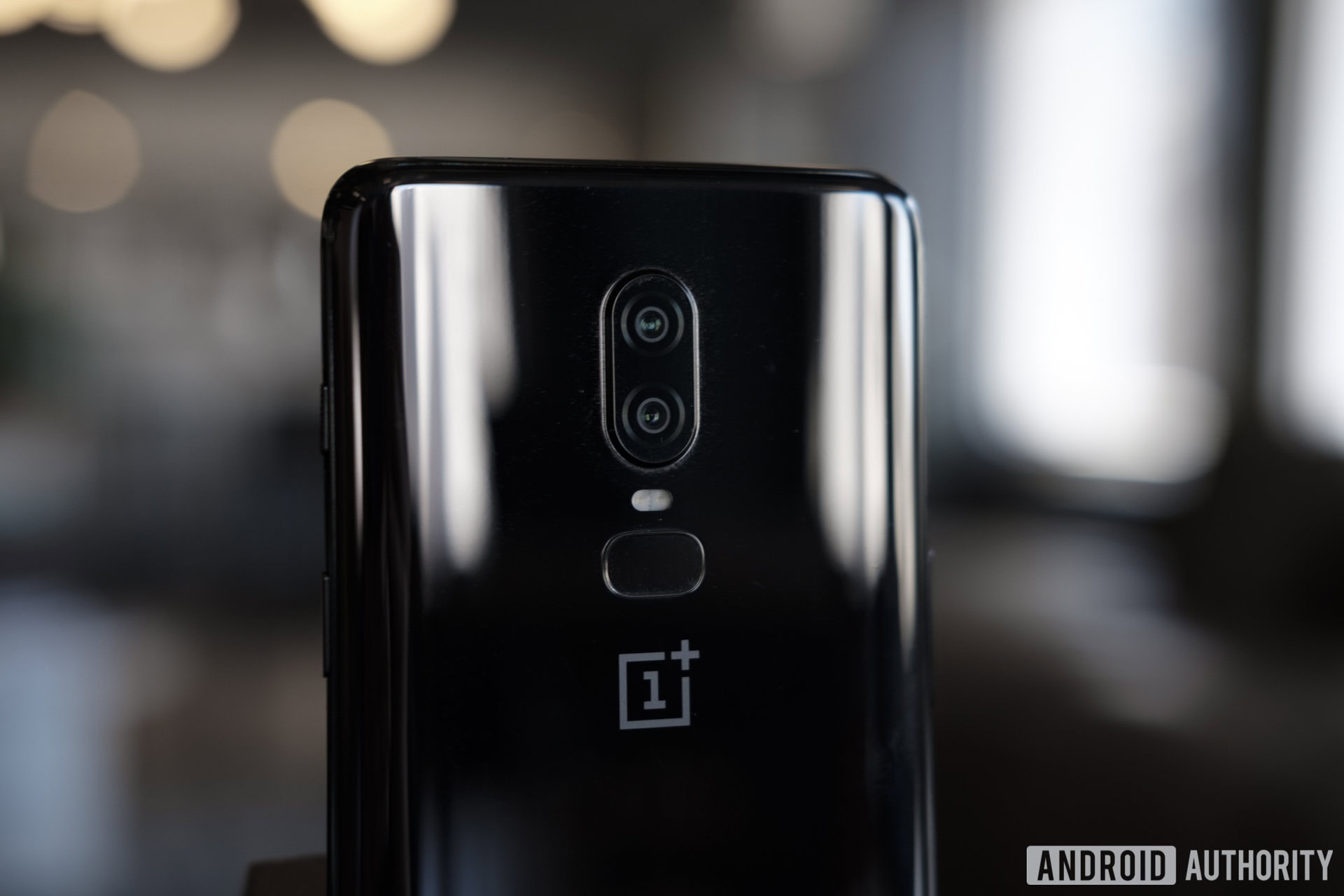
OnePlus has always had pretty average camera experiences. The OnePlus 6’s new camera is a step forward in several ways, but not necessarily to the degree we would have hoped for. Phones like the HUAWEI P20 Pro and Samsung Galaxy S9 do a lot more to improve their offerings.
The OnePlus 6 has a dual-camera configuration with 16 and 20MP cameras and an f/1.7 aperture. The 16MP camera now has a Sony IMX 519 sensor, which has 19 percent larger pixels than the 5T, to help with lowlight performance. The secondary 20MP has the same sensor as the one in the 5T.
The OnePlus 6’s photos look much sharper in low-light that the 5T, though there’s some oversharpening around the edges. Colors are more natural, and you can discern more details. The difference is particularly visible at full-size crop, where pictures are less smudgy. As you’d expect in low light, some details are still lost.
The OnePlus 6 is a major upgrade from the 5T when it comes to low-light performance

In better lighting there is still improvement, but the differences between the OnePlus 6 and 5T cameras are much less noticeable. The sharpness and details in photos from the main camera are very good, with accurate colors that aren’t oversaturated. Dynamic range is also very good here, delivering a great amount of detail without overdoing the contrast. Image quality tends to fall apart when using 2X zoom, so you are likely better off without it.
OnePlus added a few new tricks to the OnePlus 6 camera, including 4K 60fps recording and the addition of optical image stabilization (OIS). The phone can also now shoot slow-motion video in 1080p at 240fps and 720p at 480fps.
Most of the 5T’s features return in the OnePlus 6. There’s a Pro Mode for more control over images, similar to what you’d get from a DSLR. Portrait mode is also present, though it’s not exactly great. We are fans of the idea behind artificial bokeh effects, but the bokeh area on the OnePlus 6 looks pretty fake. Hopefully OnePlus continues to address this issue, especially since it plans to bring portrait mode to the front camera in a future update.
The selfie camera is really good here, and actually looks a bit better than the 5T, despite using the same sensor. Some post-processing or software improvements must be in play. Image details are great, with good color reproduction and natural skin tones.
The OnePlus 6 offers a camera experience that should be more than good enough for casual photographers, but David and I both felt it wasn’t a big upgrade from the 5T. We also feel like the software could use some further refinement. All the major OEMs are focusing on AI improvements for the camera and it’s pretty obvious this is an area where OnePlus is behind the pack.
You can check out the camera samples in full-resolution here.
Software
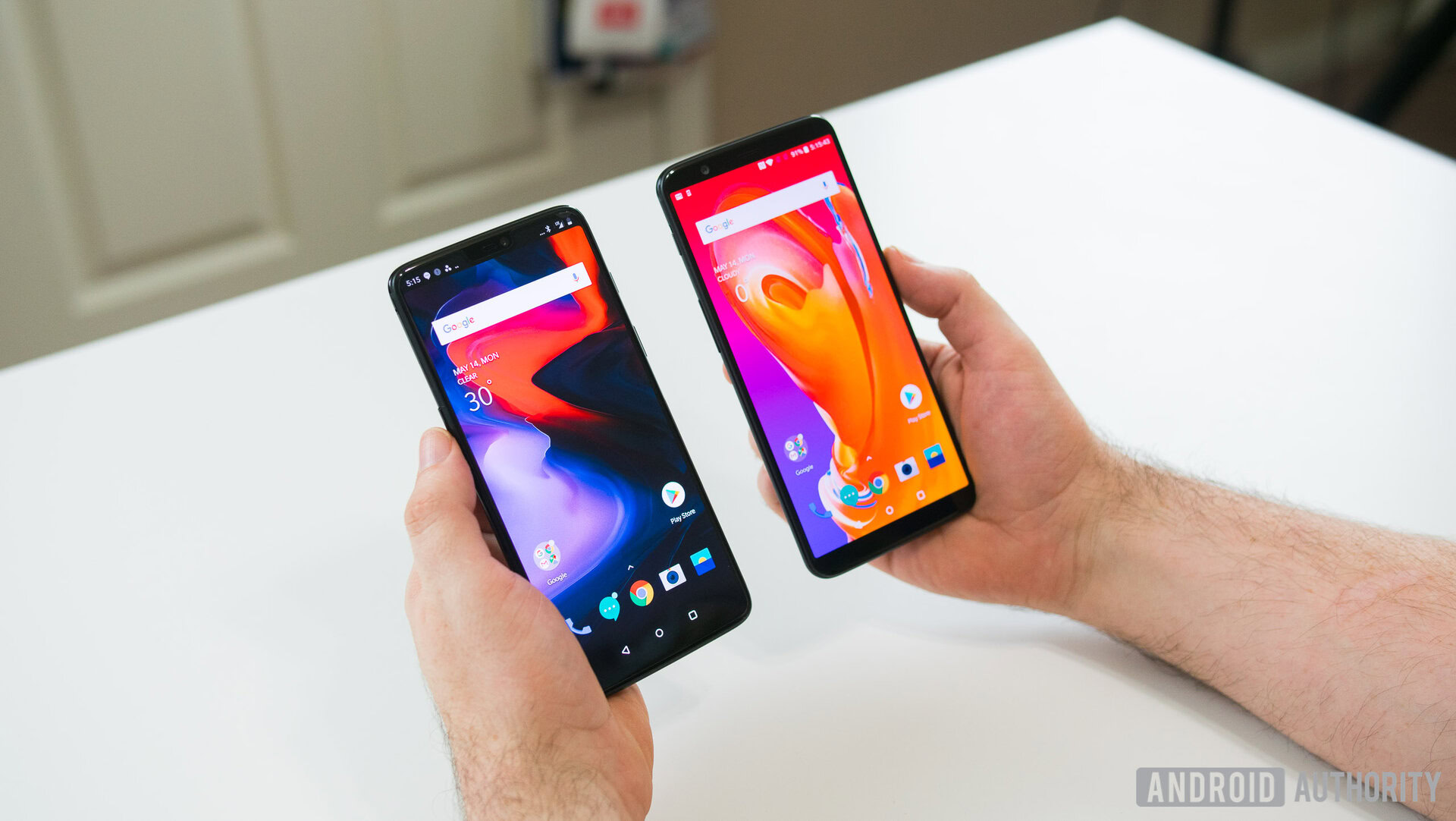
OxygenOS is one of our favorite parts of the OnePlus experience. It’s clean, fast, and doesn’t overwhelm you with any unnecessary apps. In short, it’s a lot like Google’s Pixel software in all the ways that matter. At the same time there’s plenty of customization features and settings so you can custom-tailor the experience to your needs.
Originally the phone was based on Android 8.1 Oreo and it felt nearly identical to the 8.1 upgrade on the 5T. Since then the OnePlus 6 has been updated to OxygenOS 9.0, based on Android 9 Pie. All of our favorites return here, including Parallel Apps. This feature lets you run more than one instance of the same app. This means you can have multiple logins running at once for things like Snapchat, rather than completely logging out of one to switch to the other. We’ve already mentioned many other highlights throughout our article, including Face Unlock and Reading mode.
As we mentioned in the camera section, there is a new portrait mode set to come to the phone shortly after it’s launch. We’ll be sure to give our impressions of this feature when it arrives. That’s not the only change to the camera software.
The camera app now features a basic video editing suite, so you can add things like filters, music, and even cut videos directly from within the camera app. For those who want to quickly enhance their videos right from the phone, this is a nice extra. Some third-party editing apps probably do a better job, but it’s still a nice touch.
Other key features of OxygenOS 5.1.3 include iPhone-style navigation gestures and an improved Gaming mode to reduce the allocated bandwidth to background applications. Neither of these features came with the 5T out of the box, but they exist in the 5.1.1 software update on the OnePlus 5T. There’s likely to be a few other small refinements and changes throughout the UI and stock apps, but nothing stood out too strongly.
Over the past few years most OEMs have moved towards a less-is-more approach to software. This is an area where OxygenOS particularly shines. Everything found on the phone feels like it’s there for a reason —there are few gimmicks. Shelf is one of the few features that stand out from this vanilla approach — it’s a great way to quickly find your most used apps and other important information.
Even preloaded apps seem carefully selected, consisting mostly of stock Android apps, Google apps, and the OnePlus community app. David and I felt the inclusion of Google Pay was a nice touch, as many other smartphones require you to download this manually. Not everyone may be aware of Google Pay, so pre-installing it means more users are likely to give it a try.
Everything found on the phone seems very purposefully done
OxygenOS’ minimalist design means the launcher isn’t quite as robust as what you might find with other phones and from 3rd party options, but it’s still plenty powerful. Dark and light mode let you change up the way the UI feels. There’s also accent colors to give you that little extra personal touch. OnePlus even added a number of gestures for getting around the UI easier, including the new gesture-based navigation system we mentioned before.
Specs
| OnePlus 6 | |
|---|---|
Display | 6.28-inch AMOLED 2,280 x 1,080 resolution 19:9 aspect ratio Corning Gorilla Glass 5 Supports sRGB, DCI-P3 |
SoC | Qualcomm Snapdragon 845 Octa-core, 10nm, up to 2.8GHz |
GPU | Adreno 630 |
RAM | 6/8GB LPDDR4X |
Storage | 64/128/256GB UFS 2.1 2-lane |
MicroSD | No |
Cameras | Rear cameras Main: 16MP Sony IMX 519 sensor with 1.22μm pixels, OIS, EIS, ƒ/1.7 aperture Secondary: 20MP Sony IMX 376K sensor with 1.0μm pixels, ƒ/1.7 aperture Dual LED flash Video: 4K at 30/60fps, 1080p at 30/60fps, 720p at 30fps, Super Slow Motion video at 1080p Front camera: 16MP Sony IMX 371 sensor with 1.0μm pixels, EIS, ƒ/2.0 aperture |
Audio | Bottom-firing speaker Dirac HD Sound Dirac Power Sound |
Battery | 3,300mAh Non-removable Dash Charge (5V 4A) |
Wireless charging | No |
IP rating | No |
Sensors | Fingerprint Hall Accelerometer Gyroscope Proximity Ambient light Electronic compass Sensor hub |
Ports | USB Type-C (USB 2.0) USB audio support 3.5mm headphone jack |
Network | LTE: Supports 4xCA Supports 64QAM, 256QAM, up to DL CAT 16 (1Gbps)/UL CAT 13 (150Mbps) depending on carrier support Bands: FDD LTE: Bands 1/2/3/4/5/7/8/12/17/18/19/20/25/26/28/29/30/32/66/71 TDD-LTE: Bands 34/38/39/40/41 TD-SCDMA: Bands 34/39 UMTS (WCDMA): Bands 1/2/4/5/8/9/19 CDMA: BC0/BC1 GSM: 850/900/1800/1900MHz |
Connectivity | Wi-Fi: 2x2 MIMO, 802.11 a/b/g/n/ac, 2.4G/5G Bluetooth 5.0 aptX/aptX HD support NFC GPS, GLONASS, BeiDou, Galileo |
SIM | Dual nano SIM |
Software | Android 8.1 Oreo OxygenOS |
Dimensions and weight | 155.7 x 75,4 x 7.75mm 177g |
Colors | mirror black, midnight black, silk white |
Gallery
Price – How much will it cost, and when can you buy?
The OnePlus 6 goes on sale May 22. The phone will cost $529 for the base model with 6GB of RAM and 64GB of internal storage, available in mirror black only.
For $579 you’ll get the model with 8GB of RAM and 128GB of storage. It also comes in all three colors — mirror black, midnight black, and the limited edition silk white (available later).
At the highest end of the spectrum is the OnePlus 6 with 8GB of RAM and 256GB of storage. This model only comes in midnight black and is $629. The price might seem like a lot, but you won’t find many phones with these specs for such a relatively low price.
For the holidays, the OnePlus 6 is currently being sold for $100 off its normal price tag.
OnePlus is the perfect Nexus (and Pixel) alternative
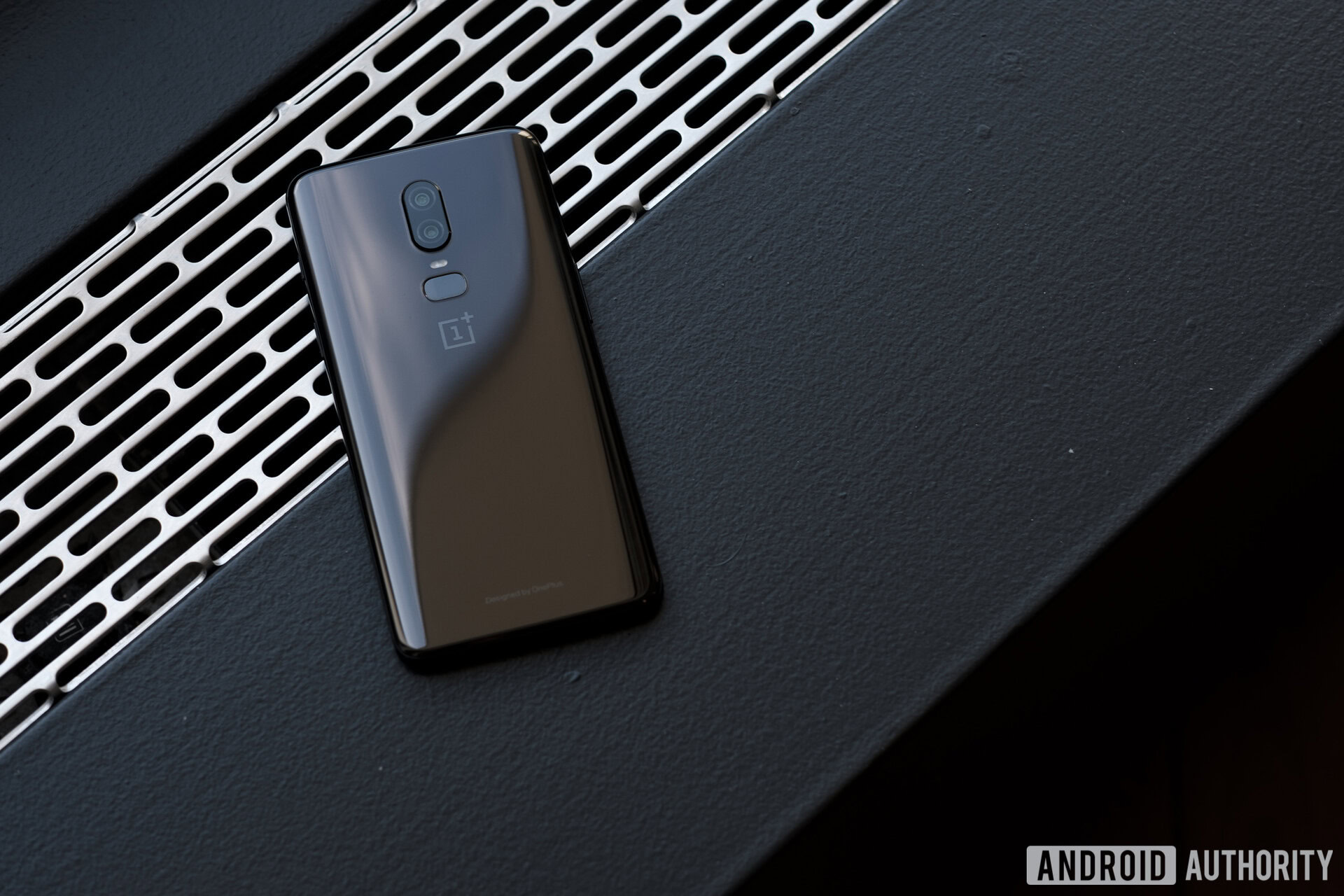
In David’s video review he spoke a lot about how the OnePlus 6 feels like the new Nexus. I have to agree.
Starting with the Nexus 4, Google focused on delivering high-end features, making minor concessions to keep prices low. With every subsequent generation the Nexus line refined its features and maintained its low prices (Okay, the Nexus 6 was an exception).
Google likely always intended to move further upstream, using its hardcore enthusiasts as unofficial beta testers to help refine its vision. At the same time, the process was gradual enough not to scare away Google’s loyal following. In the end, this effort brought us the Pixel.
Many Nexus fans transitioned to the Pixel line, despite the fact it cost a lot more. It felt considerably more mainstream, but damn was it a good phone. To its credit, it was also still very developer friendly.
Those less interested in a higher priced mainstream phone, like me, started looking for a new home. Quite a few of us found that home in OnePlus.
Now it seems like OnePlus is leaning into Google’s playbook. Just like the Nexus, this may just be the beginning of an evolution towards something else.
OnePlus seems to be following the Nexus-to-Pixel strategy to a T
The OnePlus line has a lot of the same charm as the Nexus line did. It isn’t just the low cost, but also how open the community is towards rooting, ROMing, and other tech enthusiast activities. The very stock-like OxygenOS is also a large part of that appeal. Just like the Nexus, we can slowly feel that this strategy is evolving.
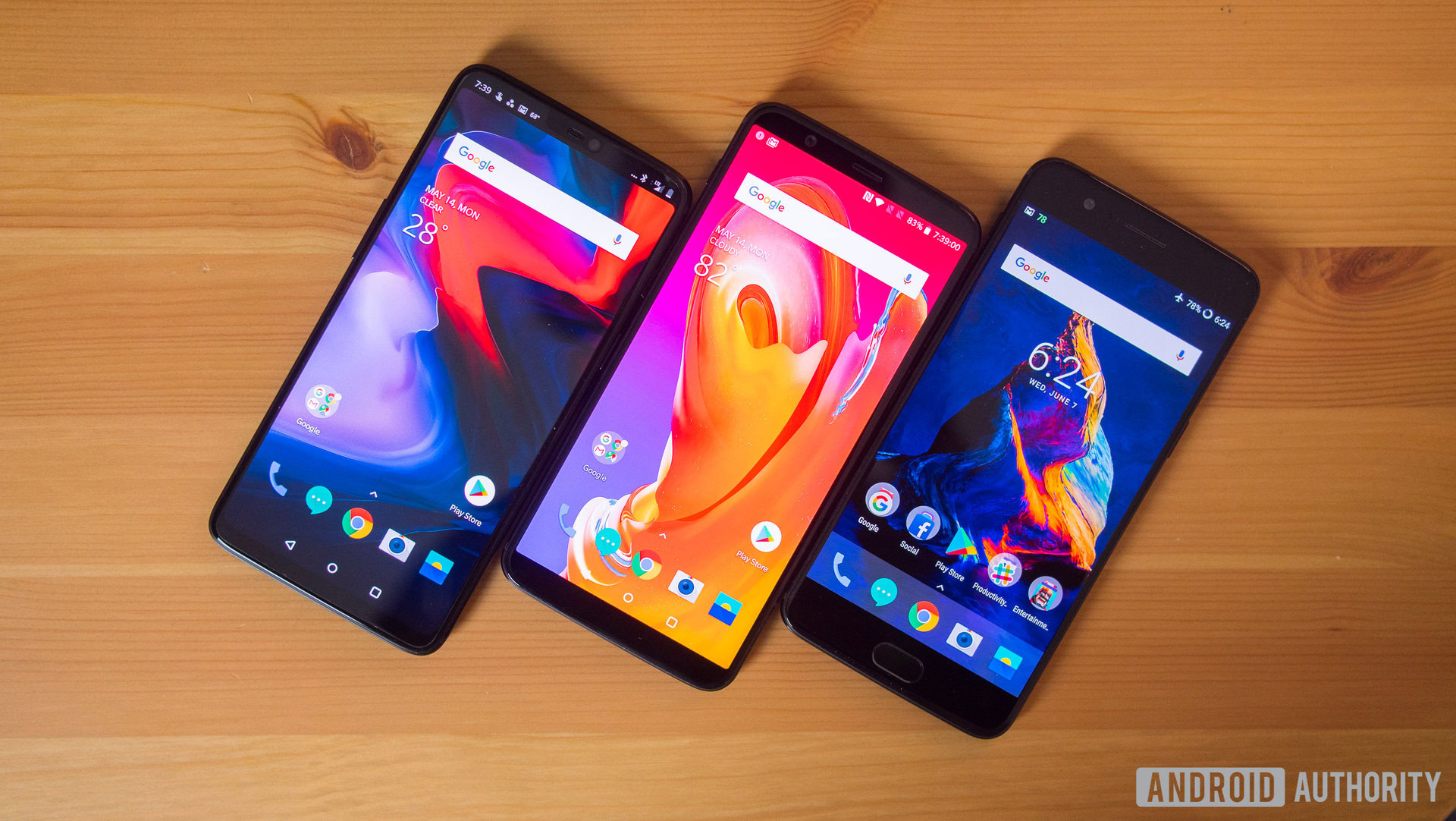
Year after year, the OnePlus line creeps forward in pricing. Each iteration feels a little less cheap and little more premium. The OnePlus 6 is the latest step in the direction.
This phone is all about refinement. OnePlus has taken all the lessons learned over its short history and perfected its experience. David and I both agree this phone is amazing — it’s fast, easy to just pick up and use, and looks as premium as phones almost twice the price.
The OnePlus is fast, easy to pick up and use, and looks as premium as phones that cost nearly double the price - in short, it's amazing
The OnePlus 6 is missing a few extras, but that makes sense. A bunch of new additional features would inflate the price even more and potentially alienate fans. Making these changes slowly means the shift in direction will be much easier to swallow.
OnePlus is the closest thing to Nexus outside of the Pixel (and perhaps the Essential Phone). Next year we may not be able to say the same, if OnePlus continues following in Google’s footsteps. Until then, the OnePlus 6 is the perfect modern-day Nexus alternative and should appeal to those who weren’t quite sold on the higher price tag of the Pixel.
If you want a ton of bang for buck, a premium experience, and don’t mind losing out on a few extra features, buy this phone.
If you’re turned off by the notch or crave all the bells and whistles found Samsung, Google, or HUAWEI phones, you might want to look elsewhere.
That’s it for our OnePlus 6 review. What do you think of OnePlus’ latest? Let us know down in the comments.
OnePlus 6 full coverage:
- OnePlus 6 vs Apple iPhone X: can David take on Goliath?
- OnePlus 6 vs OnePlus 5T: The state of never settling
- OnePlus 6 vs Samsung Galaxy S9 Plus
- OnePlus 6 color comparison: midnight black, mirror black, and silk white
- OnePlus 6 Android P Developer Preview beta 2 lands with Google Lens support
- OnePlus 6: What’s great, what’s missing
- OnePlus Bullets wireless headphones with fast charging and magnetic controls